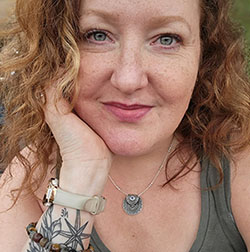I’ve spent years talking about home design in terms of function, aesthetics, and smart decisions that make life easier. But the truth is, this isn’t just about creating beautiful spaces. For me, home design is deeply personal—it’s survival, identity, and healing all wrapped into one. It’s time to talk about why.
The First Home I Remember
One of my earliest memories is lying next to a roaring fire, wrapped in blankets, listening to the grown-ups talk, play music, and sing. It was comfort perfected—the kind of warmth that doesn’t just surround you but settles into your bones. That was my first lesson in what home could be: a place where you feel held, where the world outside can’t touch you, where everything makes sense, if only for a little while. I didn’t know it then, but that moment planted the seed of everything I would come to believe about home design.
Sharing a Room That Taught Me Everything
I learned early on that space shapes experience. From the time my brother was born, I shared a bedroom with him—he has Down syndrome, and as he grew, it became clear that the way our space functioned mattered. Some things needed to be within easy reach. Some things needed to be soft, safe, adaptable. Our room wasn’t just a place to sleep—it was a lesson in how a space can help or hinder, how it can make someone feel capable or trapped. And without realizing it, I was learning the fundamentals of human-centered design long before I ever knew what that meant.
A Home That Almost Broke Me
Fast forward. Adulthood. Marriage. Kids. Life. And then everything unraveled.
It took me two years after my divorce to start feeling like a person again. Those years were brutal—depression, anxiety, a world in chaos (hello, COVID), family crises, chronic pain that nearly took me out, and the creeping, suffocating feeling that I was never going to get my life back. The space around me—my own home—felt like a reflection of everything that was wrong. It was unfinished, disjointed, like a holding cell for someone who no longer existed.
But here’s the thing about design—it’s not just about what a space looks like. It’s about what it allows. And as I slowly, painstakingly, started making small changes in my home, I realized I was also making small changes in myself. A fresh coat of paint wasn’t just paint—it was proof that something could start over. Rearranging furniture wasn’t just about flow—it was about control, about reclaiming the right to shape my own space, my own life.
Home as a Lifeline
Every single inch of my home became a message to myself. The artwork I was afraid to hang? It went up, because I refused to be afraid of my own expression. The mementos I had buried in boxes? They came out, because my past wasn’t something to erase—it was something to be immensely proud of. Every intentional choice I made in my space was a step toward becoming a person again. Not the person I used to be, but the one I was fighting to become.
What’s Next
This is just the beginning of the story. Next time, I’ll share how a home designed for survival became a home designed for joy—and how I learned to make a space that didn’t just hold my life, but helped me rebuild it.
Until next time—when I take a deep breath and tell the part of the story I’ve never shared before.
I’m weird, I’m wonderful, and I’m proud to share my life with you.
Steph

